A studio visit and interview with Artist Rajul Shah
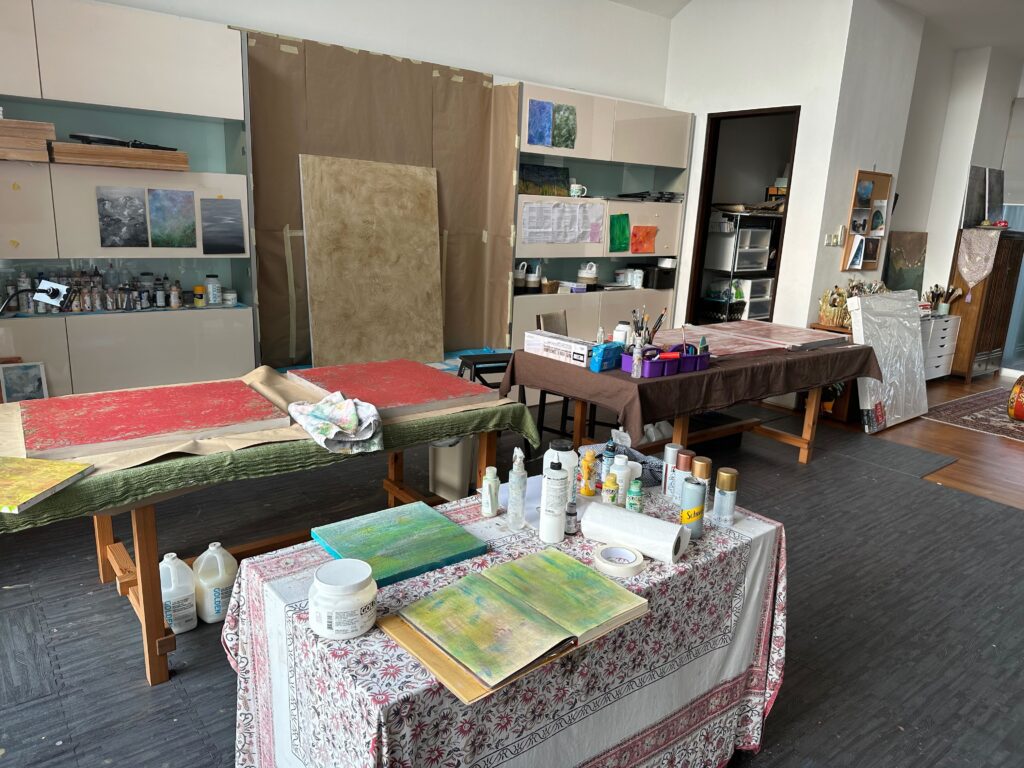
On a sunny third floor in Singapore, we step into a studio visit with artist Rajul Shah, who welcomes us into her light-filled space, a room alive with colour and the serene hum of her creative process. Her studio is bright, with tall windows that let sunlight pour across her worktables and the potted flowers blooming just outside on the deck.
In this interview, Rajul takes us through her world as an artist, sharing how her background, influences, and materials come together in her work. She discusses the layout of her studio, the tools she keeps closest at hand, the books and notes that inspire her, and even the way she navigates between several works in progress simultaneously.
Sitting with her in the studio, the smell is a mix of fresh paint and clean wood, with the practical messiness of paper towels, brushes, and colour everywhere within reach. This conversation offers a glimpse not only into her practice but also into the rhythm of her days and how she keeps her ideas moving from journal to canvas.
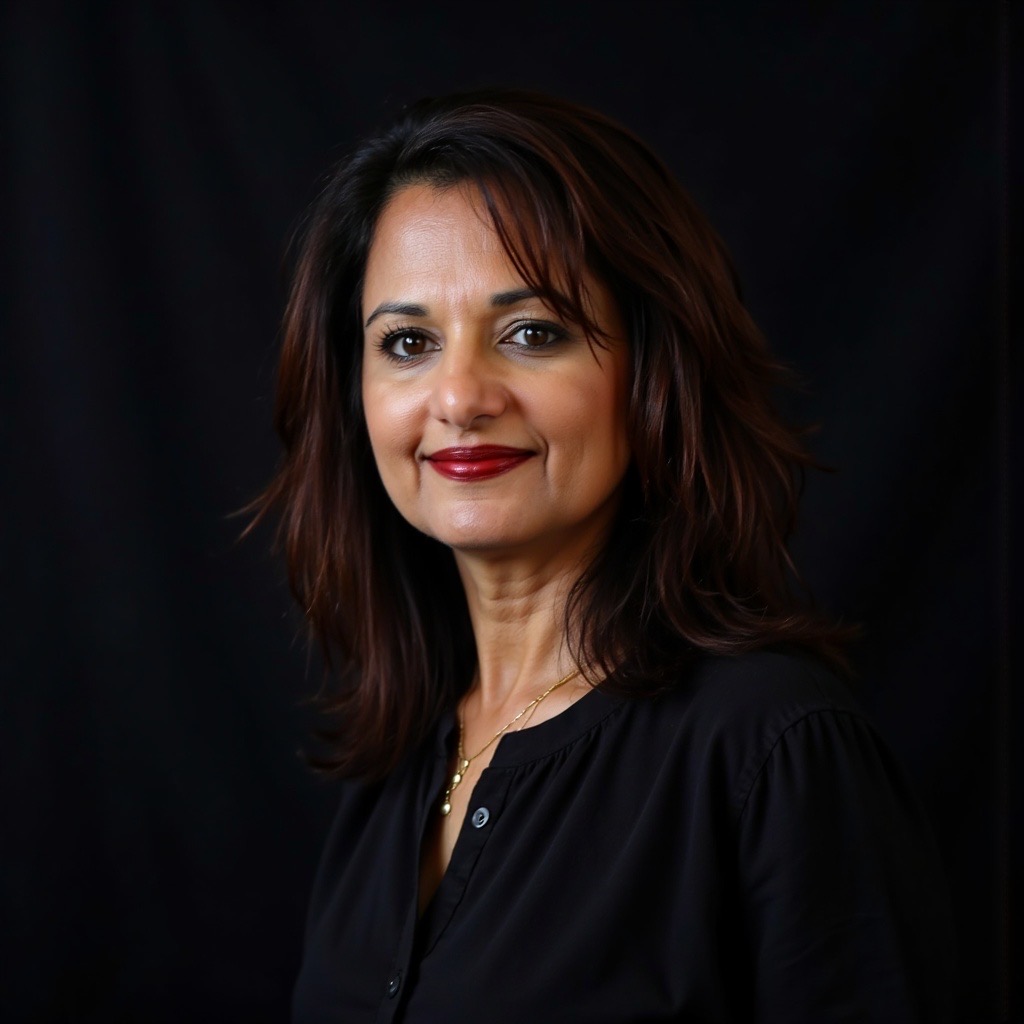
Born in 1968 in Mumbai, and currently based between Singapore and the US, I am a contemporary artist. Educated at Temple University’s Tyler School of Art in Tokyo and further informed through formative mentorships, my first show was in 2016, with acceptances to national group exhibitions at the National Art Centre, Tokyo Metropolitan Museum of Art, and the Ueno No Mori Museum in Japan. Having exhibited internationally across the US, Japan, India, Italy and Singapore, my work is held in private collections across India, the US, Singapore, and Japan. Recent press includes features in international Art Magazines, such as “Art Seen” and “Create Magazine”, and was published in the Art Book “Lines and Curves” by the Arts to Hearts Project, as well as “Artist to Watch” by the Women in Arts Network. Vedica Art Studios and Gallery in Mumbai represent me. Before becoming an artist, I spent 20 years in healthcare marketing in the US. I moved to Japan in 2012, where the bulk of my art education took place.
Subsequently, I moved to Singapore in 2019 and now live and work between Singapore and the US. Using layers of texture and colour, my artistic practice speaks to resilience, transformation and reclamation. The Japanese Art of Kintsugi and the spiritual teachings of the chakras deeply influence my work
1. Can you walk us through your studio space? What’s the first thing you see when you walk in?
My studio, located on the 3rd floor of my home in Singapore, is bright and airy. Light floods in through tall windows on either side, so the first thing I see when I walk in is the sunlight streaming onto the potted flowers of the outside deck adjacent to the studio.
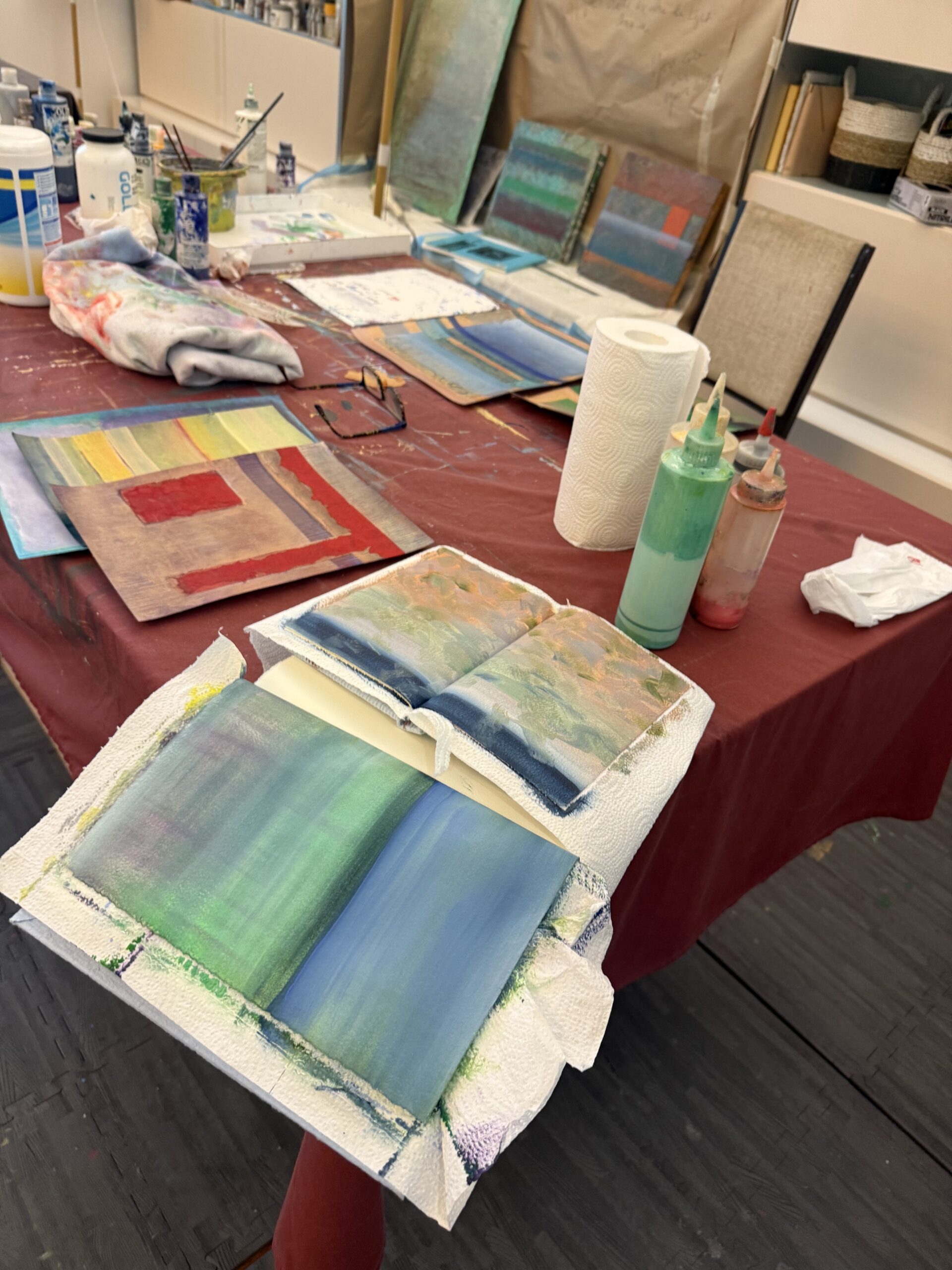
2. How is the space arranged to support the way you like to work on a painting from start to finish?
My studio has two areas. One-third of the area is designated as office space, featuring a desk, a couch, and an Oriental rug. The remaining two-thirds has two large tables positioned side by side, a wall against which I can lay large marquis-size pieces, and shelves of paint, brushes, and supplies. Opposite my desk is a bulletin board containing printouts and cutouts of inspiration, including quotes, photos of my family and printouts of pots that were “kintsugi-ed” so I can study how the lines converge and separate. Studying how a piece of pottery “cracks” or “breaks” and then how it is mended helps me understand how my artwork should translate the “healed scars” with lines.
3. What materials or tools do you keep closest to you while working?
Paper Towels, pastry bags, pieces of wood, Q-tips, deli paper (cheaper than palette paper), brushes, pencils, palette knives and even tools used when decorating and forming a cake! Numerous items can be used to lay down paint, create marks and lines, and add texture to the surface of the painting.

4. Are there certain books, film stills, or notes that stay in the studio as part of your process?
Rothko, Raza and other contemporary abstract artists heavily inspire me. I am constantly referring to their use of colour, shape and texture. “Anatomy of the Spirit” by Carolyn Myss, PhD, is a book I frequently refer to. With a prior career in healthcare and a passion for yoga, I have long been curious about the mind-body connection. This book taught me about the connection between the human body’s nervous system and how energy flows through the seven energy centres (chakras) in the body, and how the free flow, or lack thereof, of energy impacts our physical and spiritual well-being. I created a spreadsheet of the 7 chakras, their auras, affirmations, and the impact of imbalances and balance on our well-being. I refer to this often when creating and communicating about my artwork.
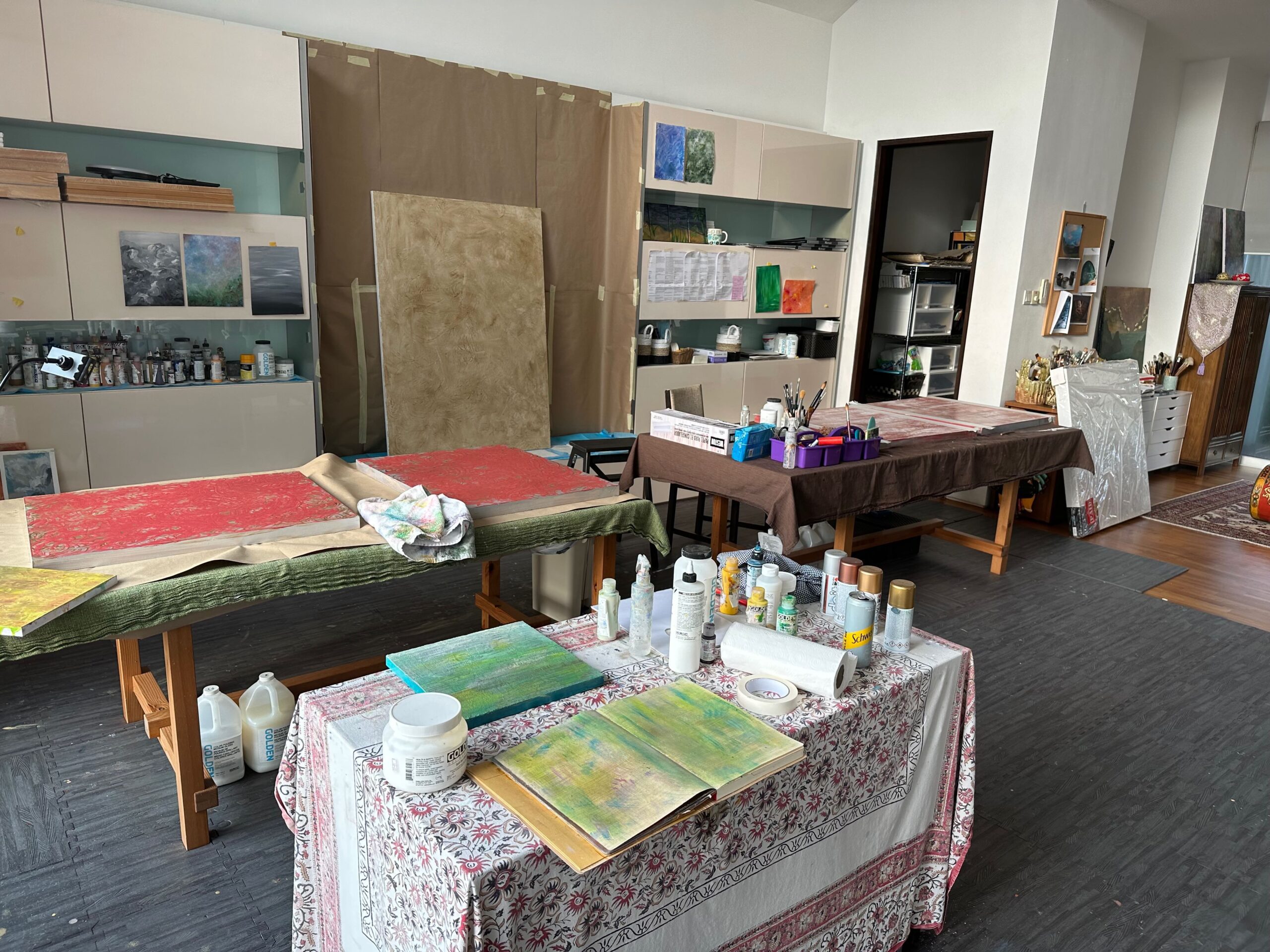
5. How do you usually keep track of ideas as they move from your journals into the canvas?
I have two types of journals. One where I keep track of daily notes, potential titles for artwork, compositional drawings, and even journal entries, affirmations, and poems I write myself, as well as the lyrics of songs I love. My second journal is actually a studio reference. Whenever I have leftover paint on my palette, I experiment with the colour in these studio journals. Admittedly, I have more than one of these as I like to slap paint, play with texture and colour. I often refer back to these, as many times what I create in “play” can be translated to what I want to present in my work.
6. What does a typical day in this studio look like for you?
I will start with the mundane to get myself warmed up. Priming canvases, sealing wood, painting the sides of almost finished artwork, cleaning out paint bottles, etc. This is an excellent transition for me from my left to my right brain. I study my unfinished artworks, mull ideas in my head and organise my workspace to start on the one that “calls to me” the most. After laying down the next layer on one painting, I will proceed to the next and continue this process. I also lay down sheets of paper canvas in case I am inspired to use up the remaining paint on my palette on a smaller work of paper, rather than in my studio journal. I find that after continually doing this for a few days, I can see the potential for a new, more refined miniature painting to take shape and come to completion. Finally, I will clean up my brushes and any tools, set up my work space for the next day and then go on to take care of admin items, such as writing an article or newsletter, reviewing social media and work on my next reel or post, and accounting.. which – yuck – I don’t know any artist who enjoys pulling together receipts and invoices.
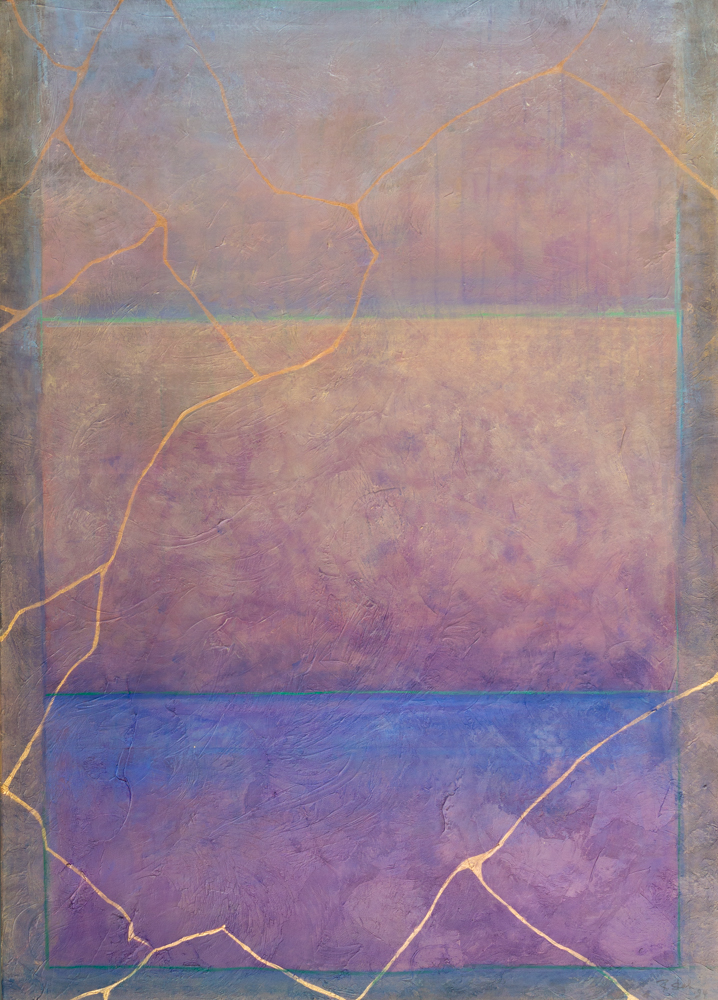
7. How does the light in this space change the way you approach a painting?
Because I have tall windows on either side of my studio, the light changes a lot during the day as it moves from east to west. I will examine my artwork in the cooler yellows of the morning, as well as the warmer hues of the afternoon/evening, to see how the colours and textures I lay down respond to light.
8. Do you have works in progress visible around the room, or do you prefer to focus on one piece at a time?
My paintings are always on display; I am fortunate to have the space to showcase them all. I work on several paintings at any given time. Several minor works on paper, medium-sized art on wood panels or canvases and at least one marquis-size. I like this as it provides me with the optionality to work on the art pieces that seem to inspire me. Some days, I will lay down texture or colour on all of them – or just two of them. When I lose my enthusiasm for the painting, I stop and move on to another one.
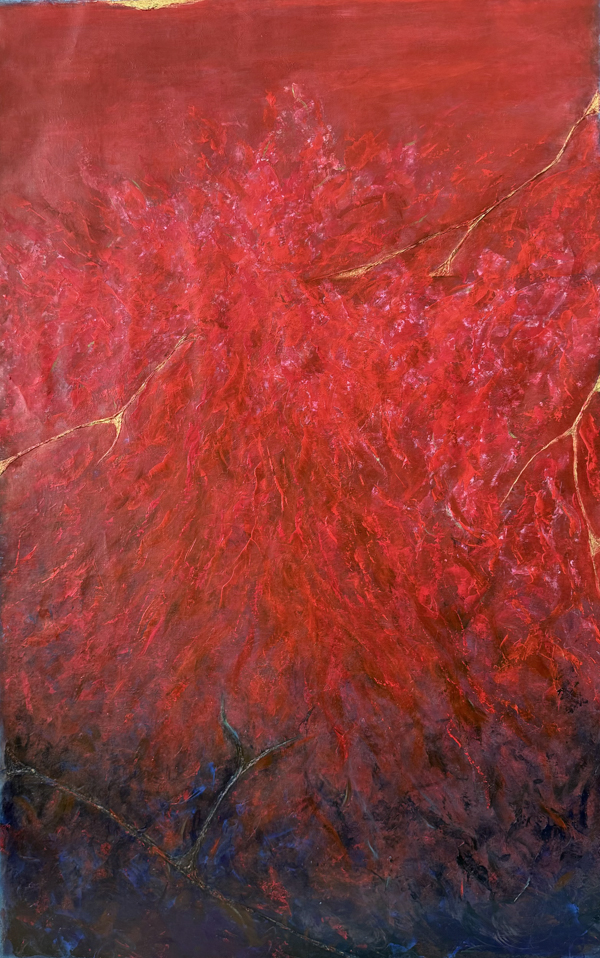
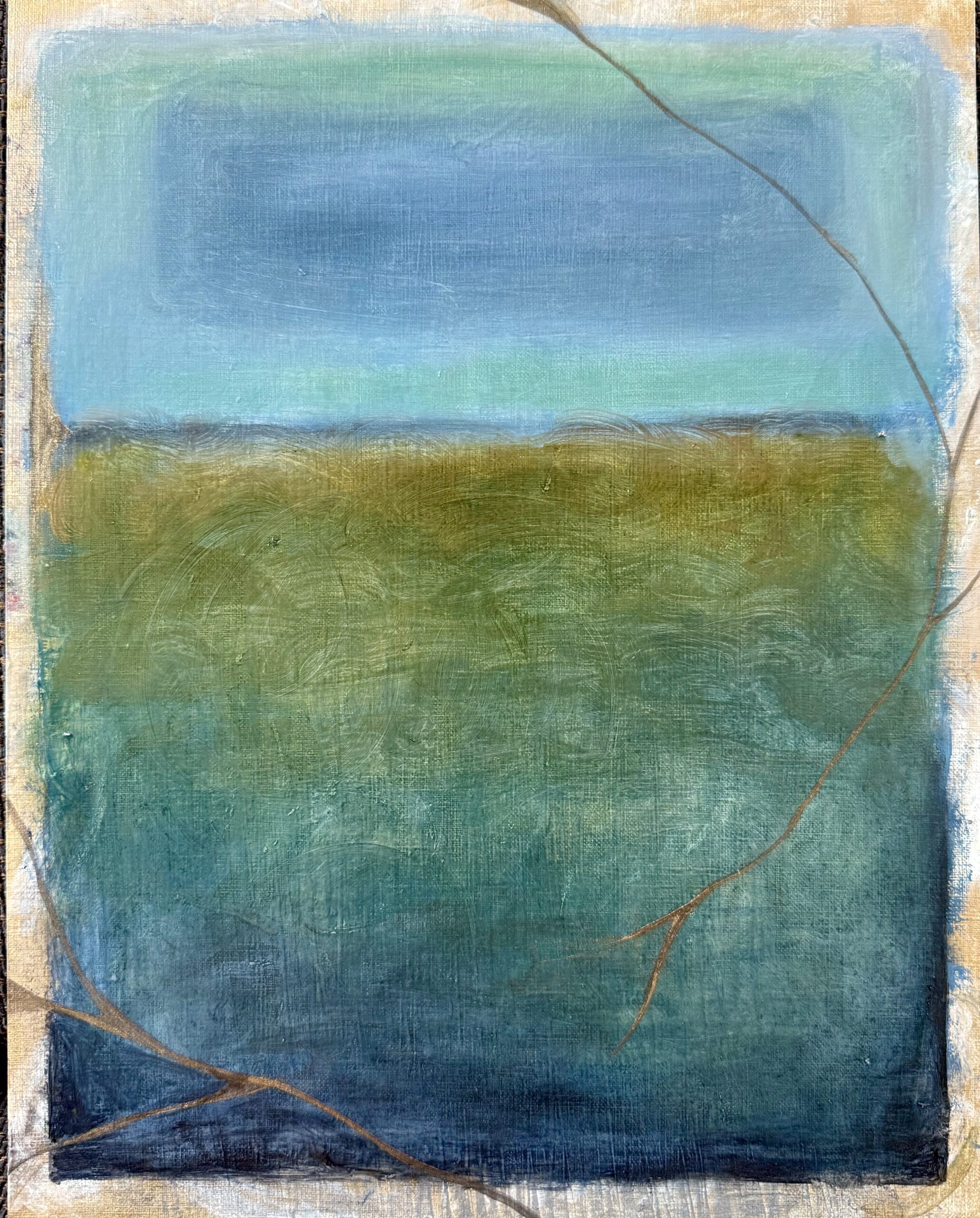
9. Is there a spot in the studio where you usually pause to step back and look at the work differently?
Not really, but I do have areas where I can view my paintings from a reasonable distance. Sometimes, I will just sit in front of one for several minutes, imagining the subsequent layers and colours.
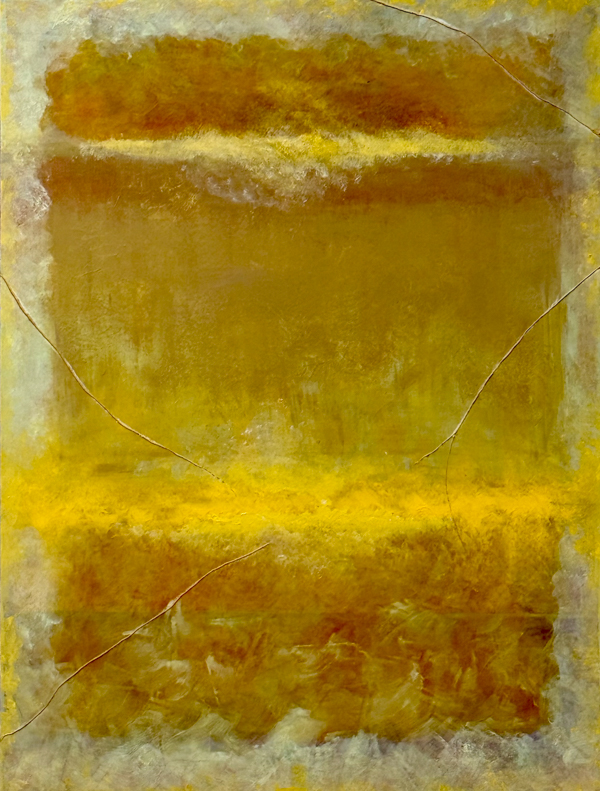
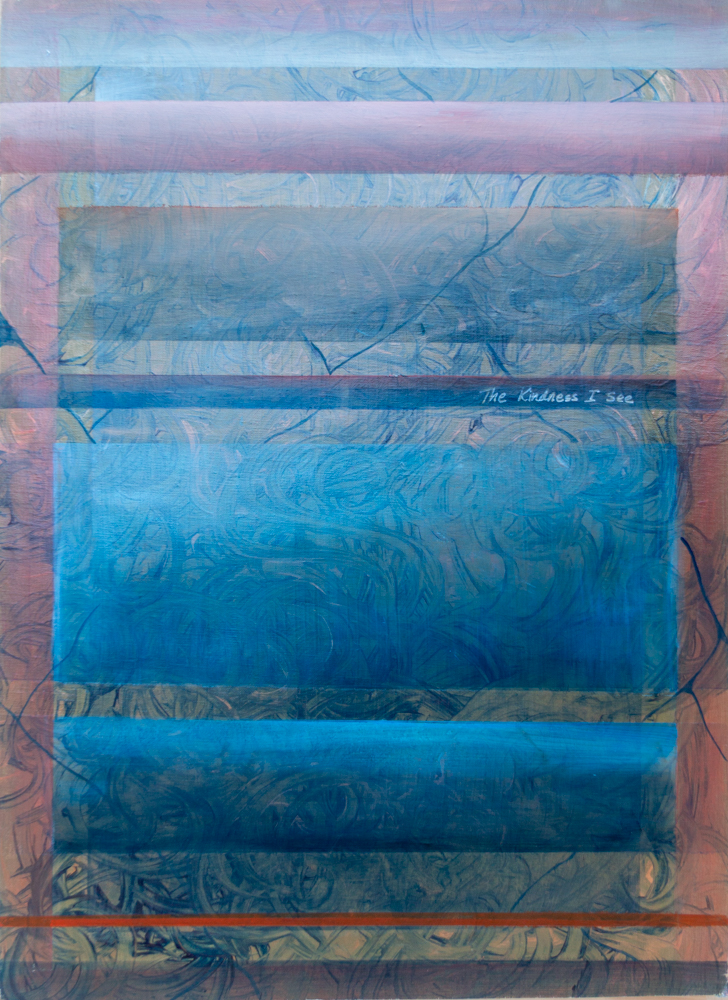
10. If you get a chance to set up your studio anywhere in the world, where would it be?
This question reminds me of the Harry Potter books/movies – I wish I could whisk my entire studio into a suitcase and then open it up wherever I am! I love to travel. I travel frequently between my home in Singapore and the US, so I have studios and supplies set up in each location. I will often pack unfinished artworks in my suitcase or a tube so I can continue to work on them when I am in the US for the summer – and then bring them back to Singapore. I also have a “painting kit” I travel with. It contains a mix of gouache, acrylic paints, brushes, my studio journal and a pad of some canvas or watercolour paper. My daily journal is always with me. Still, if I had to pick a place to set up for an extended period, it would be a warehouse in Brooklyn near my older children.
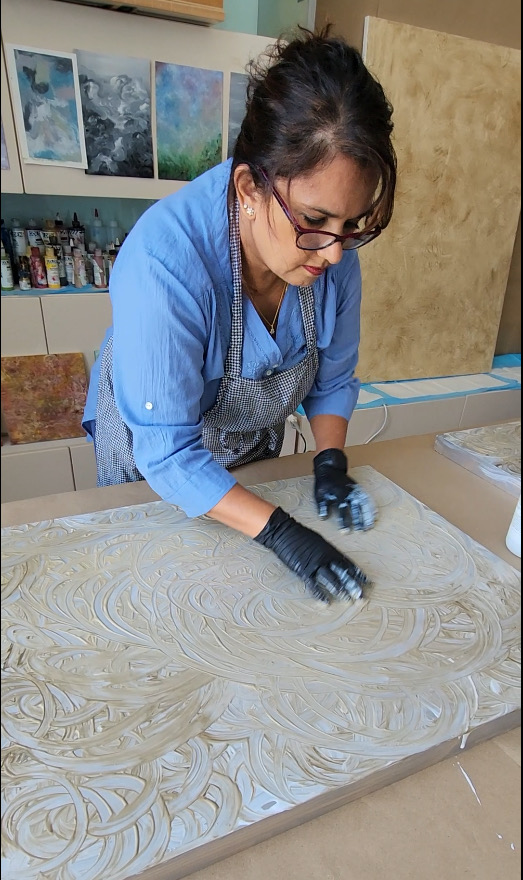
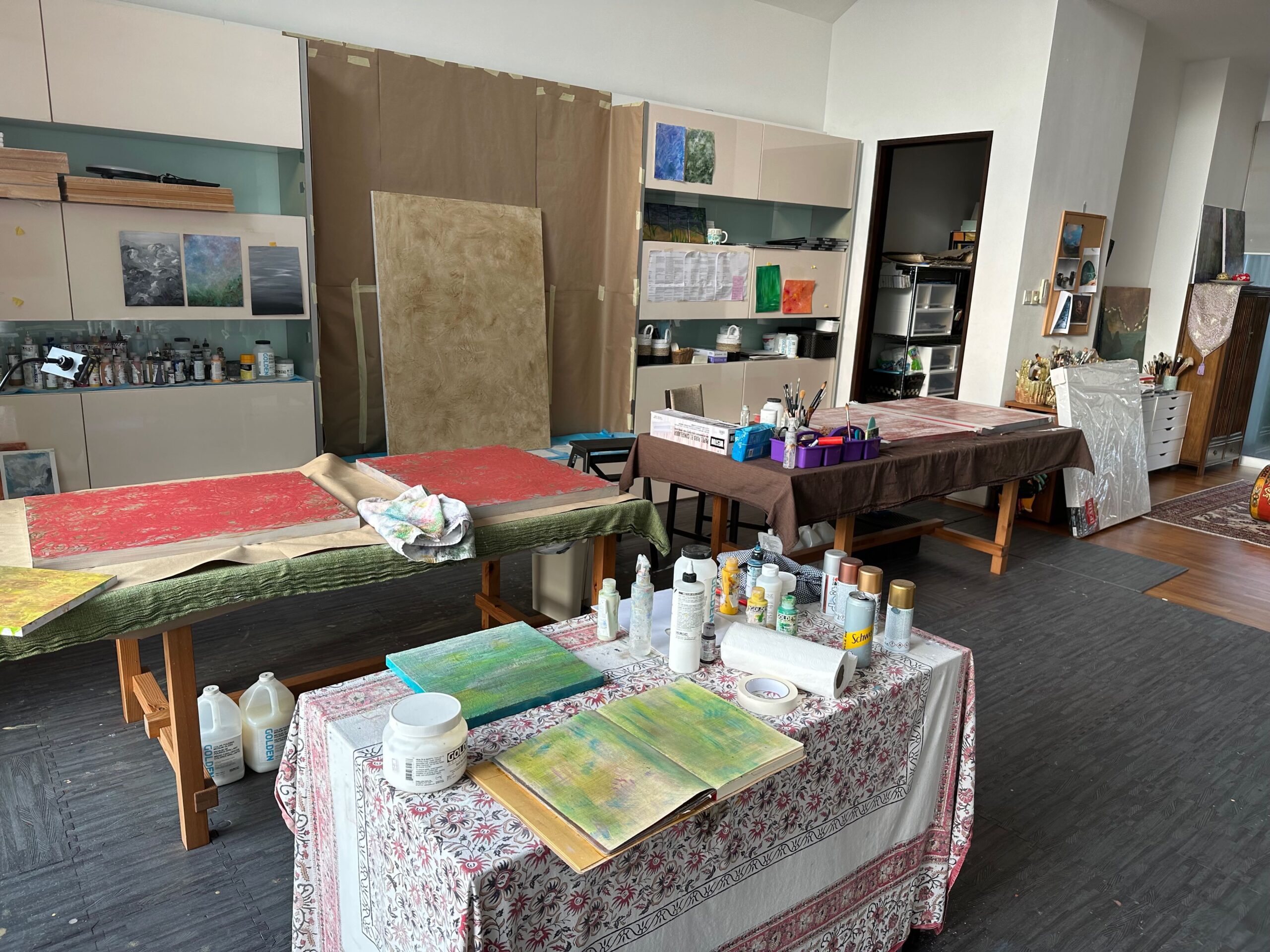
Rajul Shah’s studio feels calm yet full of movement, with sunlight shifting across her tables and unfinished canvases waiting to be picked up again. It is here that she creates large and small works inspired by kintsugi, colour, and the energy of the chakras, layering texture and paint until they come together as stories of resilience and change.
From her journey, we get to know how she shaped a second career in art after decades in healthcare, how she carries ideas across journals and travels, and how her practice is less about perfection and more about mending, evolving, and finding balance.
To learn more about Rajul, visit the links below.
